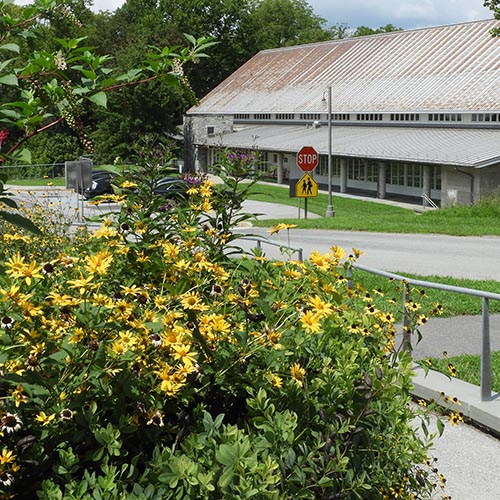
Listen to this Episode:
- From this webpage:
- Find the media player located under the episode picture.
- Click on the green triangle to listen to the audio for this episode.
- From your favorite podcast listening platform:
- Search for “Backyard Ecology.”
Show notes:
Pollinator gardens have rapidly increased in popularity, but unfortunately, there hasn’t been a lot of research on the best ways to create those gardens or on how effective those gardens really are. Happily, that’s beginning to change. More and more scientists are beginning to tackle those types of questions in order to help us better manage and protect the pollinators in our built environments.
In this episode of the Backyard Ecology Podcast, we talk with Travis Watson. Travis is the Horticulture Manager at East Tennessee State University. He also recently completed his thesis research on the types of factors make pollinator gardens more attractive to pollinators.
Travis and I talk about his research and some of his findings that stood out. One of potentially the most comforting findings to many people is that size didn’t really matter. His largest study sites had proportionately the same number of insect pollinators as his smallest study sites. The types of pollinators present may have changed, but overall insect abundance was proportionally similar between all sites. This means that no matter how small your property is, you can still do something to support pollinators.
Another key finding in his research was the importance of floral diversity. Having diverse flower families, species, colors, shapes, sizes, and bloom times all contributed to greater pollinator diversity and attractiveness. Travis attributes this to the fact that with greater floral diversity, the odds increase that you’ll be “inviting a pollinator specialist to the table” without excluding any of the generalist species that would be there anyways. However, we also discuss that this shouldn’t be taken to the extreme of trying to plant a single individual of a bunch of different species. You still need multiples of each species. As with most things in life, it is important to find that happy medium.
Our conversation covers a wide range of other topics related to his research and ways that we can apply his findings in our own gardens and yards. We end with him offering suggestions for other ways that you can get involved and make a difference, even if you don’t have land of your own.
Links:
- Travis’s email: watsont@etsu.edu
- Travis’s thesis
- Other online resources Travis recommends
- Backyard Ecology’s website
- Backyard Ecology blog – https://www.backyardecology.net/blog/
- Backyard Ecology’s Patreon page – https://www.patreon.com/backyardecology
- Subscribe to Backyard Ecology emails – https://www.backyardecology.net/subscribe/
- My email: shannon@backyardecology.net
Episode image:
- Pollinator garden
- Photo credit: Eileen Hornbaker, USFWS, public domain

Backyard Ecology: Exploring Nature in Your Backyard
Nature isn’t just “out there.” It’s all around us, including right outside our doors. Hi, my name is Shannon Trimboli, and I am the host of Backyard Ecology. I live in southcentral Kentucky and am a wildlife biologist, educator, author, beekeeper, and owner of a nursery specializing in plants for pollinators and wildlife conservation. I invite you to join me as we ignite our curiosity and natural wonder, explore our yards and communities, and improve our local pollinator and wildlife habitat. Learn more or subscribe to my email list at www.backyardecology.net.

Leave a Reply